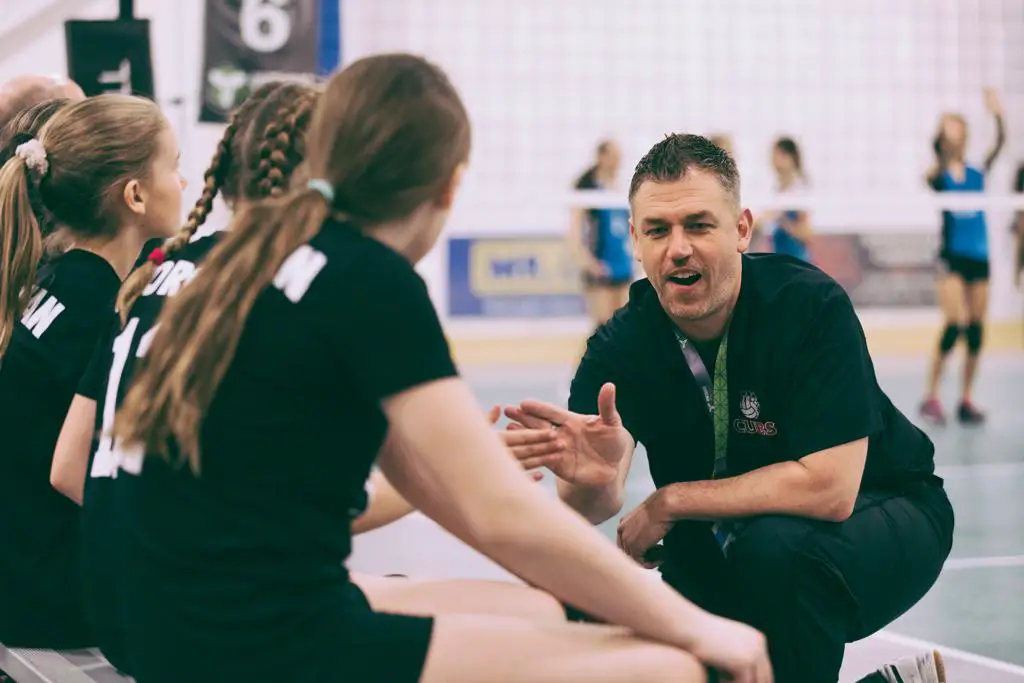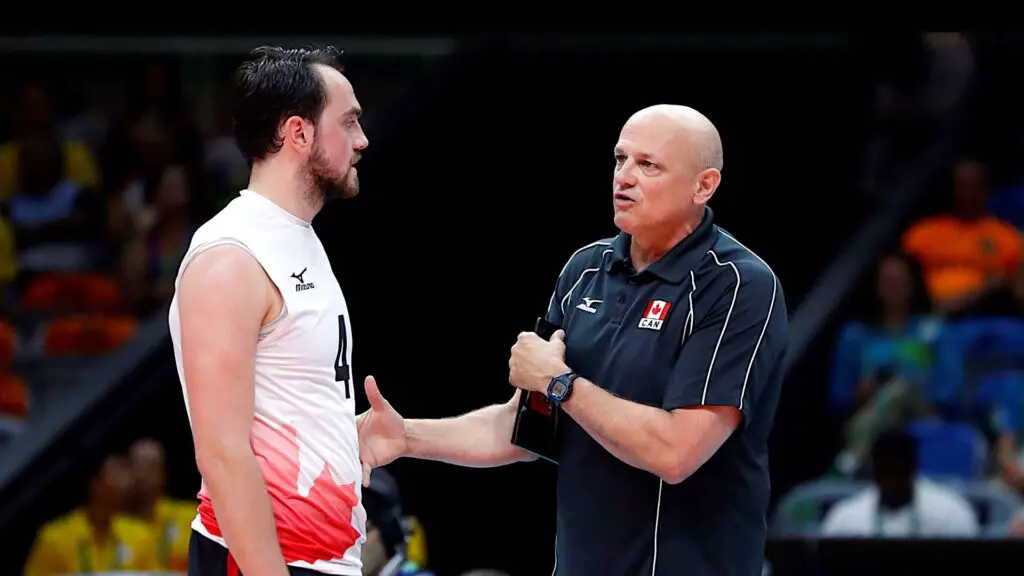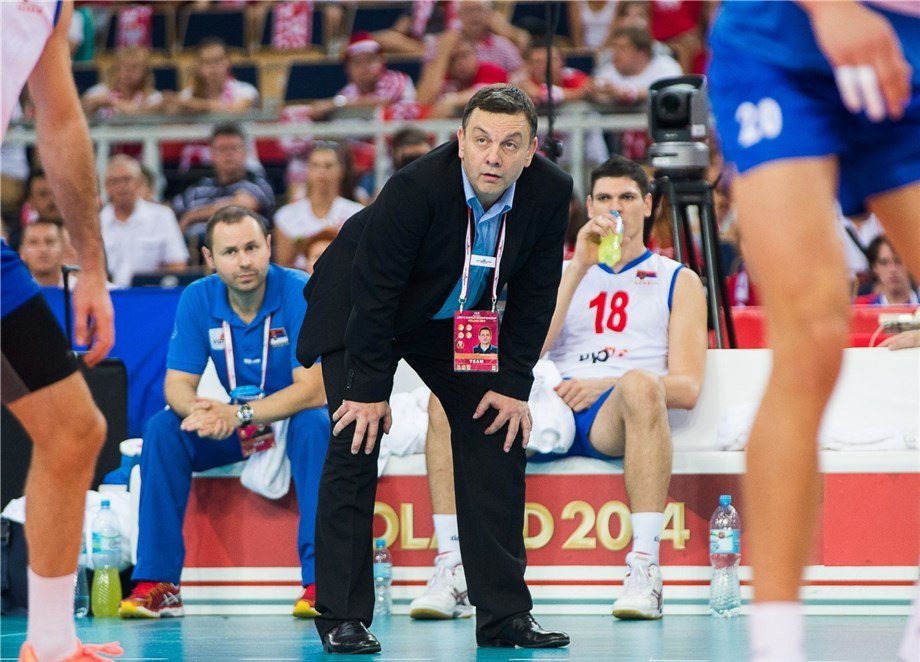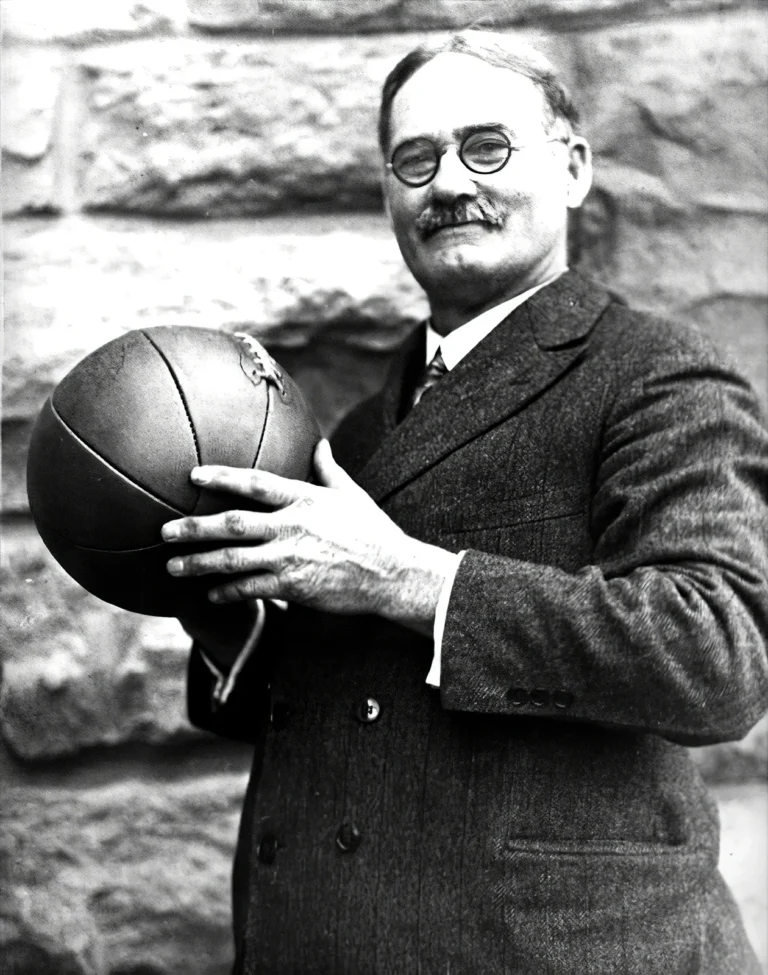How to Coach Volleyball: Essential Tips for Success

To coach volleyball, focus on teaching skills, and strategy, and fostering teamwork among players. Consistent communication and constructive feedback are key elements in successful coaching.
Coaching volleyball requires a combination of technical expertise, effective communication, and strong leadership. As a coach, your role goes beyond just teaching the game – it involves shaping players into a cohesive team and fostering a positive learning environment. By honing in on both individual skill development and team dynamics, you can create a winning formula for success on the court.
In this comprehensive guide, we will explore the essential strategies and tactics for coaching volleyball effectively, from planning engaging practice sessions to motivating players to reach their full potential. Whether you’re a seasoned coach or new to the game, this guide will provide you with valuable insights on how to elevate your coaching skills and lead your team to victory.

UNDERSTANDING THE BASICS OF VOLLEYBALL
Volleyball is a captivating sport that requires coordination, skill, and teamwork. Whether you are a beginner looking to learn the basics or an experienced player aiming to improve your coaching skills, understanding the fundamentals is essential. In this article, we will delve into the rules of the game and the different positions and roles in volleyball.
RULES OF THE GAME
Understanding the rules of volleyball is crucial for effective coaching. By familiarizing yourself with these rules, you can guide your team and ensure fair play during matches. Here are some of the key rules to remember:
- Each team consists of six players on the court, with three players positioned in front and three at the back.
- The objective is to pass the ball over the net to the opposing team’s side, aiming to make it touch the ground within the boundaries.
- Teams have a maximum of three hits to return the ball, and no individual player can hit the ball twice consecutively.
- The ball must always be hit cleanly without any prolonged contact or holding.
- Points are awarded when the ball lands within the opponent’s court, and the first team to reach 25 points with at least a 2-point lead wins the set.
POSITIONS AND ROLES
In volleyball, each player has a specific position and role that contributes to the overall dynamics of the game. By understanding these positions, you can assign your team members accordingly and optimize their strengths. Here are the main positions:
| Position | Role |
|---|---|
| Setter | This player takes on the role of the team’s main decision-maker, orchestrating the offense by setting up the ball for attackers. |
| Libero | The libero is a specialized back-row player responsible for defensive work, including receiving and digging. |
| Middle Blocker | These players are positioned in the center and have a key role in both offense and defense, blocking the opponent’s attacks and also attacking the ball. |
| Outside Hitter | Also known as the left-side hitter, this player focuses on attacking the ball from the left side of the court, aiming to score points and block opponents’ hits. |
| Opposite Hitter | Playing on the right side of the court, the opposite hitter complements the outside hitter, providing additional attacking and blocking options. |
By understanding the positions and roles in volleyball, you can foster a cohesive and well-coordinated team. Assigning players the right positions not only optimizes their performance but also strengthens the overall strategy of your team.
DEVELOPING COACHING SKILLS
Developing coaching skills for volleyball involves mastering techniques to effectively guide players on the court. Focus on communication, strategic planning, and individual player development to enhance team performance and foster a winning mindset. By honing these skills, coaches can elevate their players’ abilities and lead them to success on the volleyball court.
COMMUNICATION AND LEADERSHIP
Effective communication and strong leadership skills are essential for successful coaching in volleyball. Feedback should be concise and motivational. Leaders should inspire and guide players.
PLANNING AND ORGANIZATION
Meticulous planning and organized training sessions ensure efficiency in coaching volleyball. Create detailed practice schedules and drills ahead. Stay agile in response to changing situations. Prioritize player development.
TEACHING FUNDAMENTALS AND TECHNIQUES
When coaching volleyball, teaching fundamentals, and techniques is crucial for players to master the sport.
PASSING AND SETTING
- Teach players to maintain a strong platform when passing the ball.
- Emphasize the importance of footwork and angle of contact for better sets.
- Encourage consistent practice to improve passing and setting skills.
SERVING AND HITTING
- Focus on proper serving technique, including toss placement and follow-through.
- Teach hitters to approach the ball with power and precision in their hits.
- Provide drills to enhance serving accuracy and hitting placement.
By breaking down fundamentals and techniques into specific skills like passing, setting, serving, and hitting, coaches can help players excel in volleyball.

CREATING EFFECTIVE PRACTICE SESSIONS
When it comes to coaching volleyball, creating effective practice sessions is crucial for helping your players develop their skills. This section will cover two key aspects of designing practice sessions: Designing Drills and Exercises and Focusing on Skill Progression.
DESIGNING DRILLS AND EXERCISES
When designing drills and exercises for your volleyball practice sessions, it’s important to consider the specific skills you want your players to work on. Here are a few tips to keep in mind:
- Focus on specific skills: Design drills that target specific skills such as serving, passing, setting, and hitting. This allows players to practice and improve each skill individually.
- Keep drills dynamic: Incorporate movement and game-like scenarios into your drills to make them more engaging and realistic. This will help players better transfer their skills to actual game situations.
- Modify drills for different skill levels: Make sure to adapt the difficulty level of drills to match the abilities of your players. This ensures that each player is appropriately challenged and can make progress.
- Provide feedback: During drills, observe your players’ performance and provide them with constructive feedback. This helps them understand their strengths and areas for improvement.
FOCUSING ON SKILL PROGRESSION
Another important aspect of creating effective practice sessions is focusing on skill progression. This means structuring your sessions in a way that allows players to build upon their existing skills and gradually improve. Here’s how you can do it:
- Start with the basics: Begin each session with fundamental skills such as footwork, body positioning, and ball control. This helps players establish a strong foundation.
- Advance to more complex skills: Once players have mastered the basics, gradually introduce more advanced skills and strategies. This allows them to continually challenge themselves and expand their abilities.
- Combine skills: As players progress, incorporate drills and exercises that require them to combine multiple skills. This helps them develop a better understanding of how different skills work together in a game.
- Simulate game situations: Towards the end of practice sessions, incorporate drills that resemble real game scenarios. This allows players to apply their skills in a more realistic setting and prepares them for actual matches.
By designing drills and exercises that target specific skills and focusing on skill progression, you can create effective practice sessions that help your volleyball players improve their abilities. Remember to adapt to the difficulty level, provide feedback, and gradually challenge your players to ensure continuous growth.
BUILDING A STRONG TEAM CULTURE
Building a strong team culture is crucial for the success of a volleyball team. It fosters camaraderie, support, and motivation among the players, ultimately leading to better performance on the court. By promoting teamwork and sportsmanship and by motivating and inspiring players, coaches can create a cohesive and resilient team environment.
PROMOTING TEAMWORK AND SPORTSMANSHIP
Promoting teamwork and sportsmanship is essential for building a strong team culture. Encouraging players to work together, communicate effectively, and respect each other on and off the court establishes a positive team dynamic. Organizing team-building activities, such as group discussions, collaborative drills, and joint goal-setting sessions, can help foster a sense of unity and mutual support among the players.
MOTIVATING AND INSPIRING PLAYERS
Motivating and inspiring players is key to maintaining a positive team culture. Recognizing and acknowledging individual and team accomplishments, offering constructive feedback, and setting clear goals can keep the players motivated and dedicated. Additionally, leading by example, demonstrating passion for the sport, and instilling a strong work ethic can inspire the team to excel both as individuals and as a collective unit.
GAME STRATEGIES AND TACTICS
When coaching volleyball, formulating a game plan is essential for success. A well-thought-out game plan takes into account the strengths and weaknesses of the team and the specific opponents they will be facing. It outlines strategies, tactics, and objectives to achieve the desired outcome.
FORMULATING A GAME PLAN
First, analyze your team’s strengths and weaknesses. Identify key players and decide on the formations and tactics best suited to your players’ abilities. Developing a clear and precise game plan ensures that everyone understands their role and the overall strategy, leading to more coordinated and effective play on the court.
ANALYZING OPPONENTS
Understanding the opponents’ strengths and weaknesses is vital in determining the right game plan. Conduct a thorough analysis of the opposing team’s playing style, key players, and any patterns or tendencies they exhibit. This information can then be used to develop strategies for exploiting their weaknesses and neutralizing their strengths.
Next, consider how your team’s strengths can be utilized against the opponent’s weaknesses. Creating a game plan that capitalizes on this analysis will give your team a significant advantage on the court. Adapting the game plan based on real-time observations during the match can further enhance its effectiveness.
INCORPORATING STRENGTH AND CONDITIONING
Enhance volleyball coaching by integrating strength and conditioning drills to improve player performance and prevent injuries efficiently. Implementing tailored exercises boosts agility, power, and endurance, ensuring players are well-equipped for the demands of the game.
PHYSICAL FITNESS AND ENDURANCE TRAINING
Incorporating strength and conditioning exercises is essential when coaching volleyball. Physical fitness and endurance training help players improve their overall performance on the court. By focusing on these aspects, players can develop greater stamina, agility, and power, enabling them to excel during demanding matches.
PREVENTING INJURIES
Prioritizing injury prevention is crucial in coaching volleyball. By incorporating strength and conditioning, coaches can minimize the risk of injuries among players. This training helps to strengthen muscle groups used in volleyball, such as the shoulders, core, and legs. Through targeted exercises and conditioning routines, players can minimize the strain placed on their bodies and reduce the likelihood of injuries, such as sprains and muscle strains. To enhance injury prevention efforts, coaches can emphasize proper technique and form throughout training sessions. By teaching players correct body mechanics, coaches can help them avoid unnecessary strain on joints and muscles, reducing the risk of injuries. Here are some effective ways to incorporate strength and conditioning into volleyball coaching sessions:
- Integrate weight training into practice sessions, focusing on exercises that target the major muscle groups involved in volleyball, such as squats for leg strength and shoulder presses for upper body strength.
- Incorporate plyometric exercises, such as jump squats or box jumps, to improve power and explosiveness, crucial for spiking and blocking.
- Include cardiovascular exercises, such as running drills or interval training, to improve endurance and stamina on the court.
- Utilize resistance bands and bodyweight exercises to enhance flexibility, balance, and agility, which are essential for quick movements and reactions on the court.
- Implement circuit training routines that combine various exercises targeting different muscle groups, allowing players to develop well-rounded physical fitness.
Remember, coaching volleyball isn’t just about the technical aspects of the game; it’s also about helping players improve their physical fitness and preventing injuries. By incorporating strength and conditioning exercises into training sessions, you can empower your players to perform at their best and reduce the risk of injuries, ensuring a successful and enjoyable volleyball season.
FREQUENTLY ASKED QUESTIONS ON (HOW TO COACH VOLLEYBALL)
WHAT ARE THE ESSENTIAL SKILLS FOR VOLLEYBALL COACHING?
Coaching volleyball requires strong communication, strategic thinking, technical knowledge, and leadership abilities.
HOW CAN I IMPROVE AS A VOLLEYBALL COACH?
Continuous learning, attending coaching clinics, seeking mentorship, and self-evaluation can help you improve as a volleyball coach.
WHAT ARE THE KEY ASPECTS OF EFFECTIVE VOLLEYBALL TRAINING?
Effective volleyball training focuses on developing skills, teamwork, fitness, and tactical understanding.
HOW DO YOU CREATE A SUCCESSFUL COACHING STRATEGY FOR VOLLEYBALL?
Creating a successful coaching strategy involves understanding your team, setting clear goals, practicing game scenarios, and adapting to opponents’ strengths.
CONCLUSION
Mastering the art of coaching volleyball is no small feat. By following these tips and techniques, you can become a more effective and successful coach. Remember to focus on communication, skill development, and creating a positive and supportive team environment.
Whether you’re a seasoned veteran or just starting out, coaching volleyball is a rewarding experience that requires dedication and a passion for the sport. So grab your clipboard and whistle, and get ready to inspire and motivate your team to greatness on the court.






